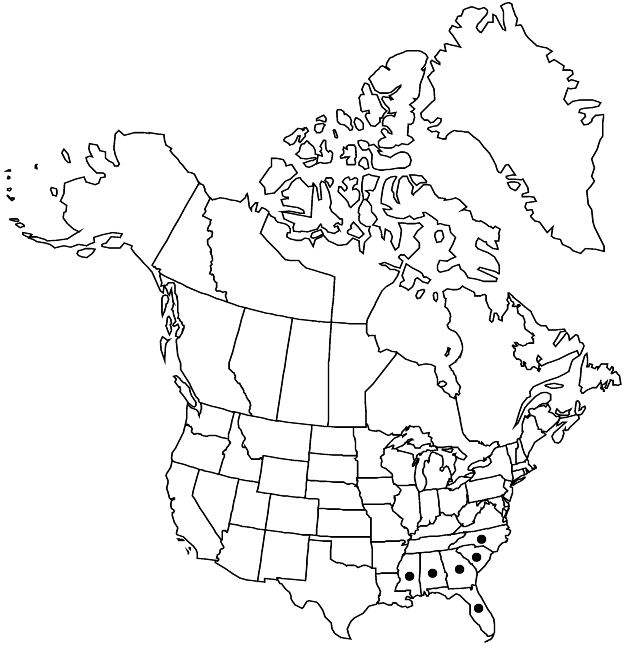Difference between revisions of "Crocanthemum corymbosum"
in N. L. Britton and A. Brown, Ill. Fl. N. U.S., ed. 2, 2: 541. 1913.
FNA>Volume Importer |
imported>Volume Importer |
||
| (6 intermediate revisions by 2 users not shown) | |||
| Line 1: | Line 1: | ||
{{Treatment/ID | {{Treatment/ID | ||
|accepted_name=Crocanthemum corymbosum | |accepted_name=Crocanthemum corymbosum | ||
| − | |accepted_authority=(Michaux) Britton | + | |accepted_authority=(Michaux) Britton |
|publications={{Treatment/Publication | |publications={{Treatment/Publication | ||
|title=in N. L. Britton and A. Brown, Ill. Fl. N. U.S., ed. | |title=in N. L. Britton and A. Brown, Ill. Fl. N. U.S., ed. | ||
| Line 12: | Line 12: | ||
|label=Endemic | |label=Endemic | ||
}} | }} | ||
| − | |basionyms={{Treatment/ID/ | + | |basionyms={{Treatment/ID/Basionym |
|name=Helianthemum corymbosum | |name=Helianthemum corymbosum | ||
|authority=Michaux | |authority=Michaux | ||
| + | |rank=species | ||
| + | |publication_title=Fl. Bor.-Amer. | ||
| + | |publication_place=1: 307. 1803 | ||
}} | }} | ||
|synonyms={{Treatment/ID/Synonym | |synonyms={{Treatment/ID/Synonym | ||
|name=Cistus corymbosus | |name=Cistus corymbosus | ||
|authority=(Michaux) Poiret | |authority=(Michaux) Poiret | ||
| + | |rank=species | ||
}} | }} | ||
|hierarchy=Cistaceae;Crocanthemum;Crocanthemum corymbosum | |hierarchy=Cistaceae;Crocanthemum;Crocanthemum corymbosum | ||
| Line 34: | Line 38: | ||
|elevation=0–50 m | |elevation=0–50 m | ||
|distribution=Ala.;Fla.;Ga.;Miss.;N.C.;S.C. | |distribution=Ala.;Fla.;Ga.;Miss.;N.C.;S.C. | ||
| − | |discussion=<p>Crocanthemum corymbosum is unique in Crocanthemum because of its corymbose inflorescence of long-pedicelled petaliferous flowers overtopping subsessile, apetalous flowers. Other species may produce long-pedicelled petaliferous flowers; the inflorescence shape is different. The two flower types develop synchronously, unlike in other species except C. glomeratum. The bicolored leaves, dark adaxially and pale abaxially, are a strong field and herbarium character.</p> | + | |discussion=<p><i>Crocanthemum corymbosum</i> is unique in <i>Crocanthemum</i> because of its corymbose inflorescence of long-pedicelled petaliferous flowers overtopping subsessile, apetalous flowers. Other species may produce long-pedicelled petaliferous flowers; the inflorescence shape is different. The two flower types develop synchronously, unlike in other species except <i>C. glomeratum</i>. The bicolored leaves, dark adaxially and pale abaxially, are a strong field and herbarium character.</p> |
|tables= | |tables= | ||
|references= | |references= | ||
| Line 43: | Line 47: | ||
-->{{#Taxon: | -->{{#Taxon: | ||
name=Crocanthemum corymbosum | name=Crocanthemum corymbosum | ||
| − | + | |authority=(Michaux) Britton | |
| − | |authority=(Michaux) Britton | ||
|rank=species | |rank=species | ||
|parent rank=genus | |parent rank=genus | ||
| Line 58: | Line 61: | ||
|publication year=1913 | |publication year=1913 | ||
|special status=Endemic | |special status=Endemic | ||
| − | |source xml=https:// | + | |source xml=https://bitbucket.org/aafc-mbb/fna-data-curation/src/2e0870ddd59836b60bcf96646a41e87ea5a5943a/coarse_grained_fna_xml/V6/V6_763.xml |
|genus=Crocanthemum | |genus=Crocanthemum | ||
|species=Crocanthemum corymbosum | |species=Crocanthemum corymbosum | ||
Latest revision as of 22:23, 5 November 2020
Herbs or subshrubs. Stems ascending to erect, 10–30(–50) cm, stellate-pubescent, glabrescent. Leaves cauline; petiole 1–5 mm; blade bicolor, obovate-elliptic to elliptic-lanceolate, 12–35(–47) × 3–10(–13) mm, base cuneate, apex obtuse, surfaces stellate-pubescent, lateral veins raised abaxially. Inflorescences terminal, compound dichasia in corymbiform cymes; chasmogamous flowers 1–6 per dichasium, overtopping cleistogamous, cleistogamous 10–45 per dichasium, produced simultaneously. Pedicels 6–15 mm, villous and stellate-pubescent; bracts 2–7 × 0.2–1.2 mm. Chasmogamous flowers: outer sepals spatulate-linear, 2.4–4.5 × 0.7–1.2 mm, apex obtuse, inner sepals 3–7 × 2.5–3.6 mm, apex acute to acuminate; petals obovate, 6–11 × 5–9.5 mm; capsules 3.6–5.4 × 3–4 mm, glabrous. Cleistogamous flowers: outer sepals linear, 1.8–3 × 0.3–0.9 mm, inner sepals ovate, 2.2–4.8 × 1.2–3 mm, apex acute; capsules 1.6–3.8 × 1.4–3 mm, glabrous.
Phenology: Flowering late Feb–Apr.
Habitat: Stable maritime dunes, maritime forests, sandy pinelands, live-oak woodlands
Elevation: 0–50 m
Distribution

Ala., Fla., Ga., Miss., N.C., S.C.
Discussion
Crocanthemum corymbosum is unique in Crocanthemum because of its corymbose inflorescence of long-pedicelled petaliferous flowers overtopping subsessile, apetalous flowers. Other species may produce long-pedicelled petaliferous flowers; the inflorescence shape is different. The two flower types develop synchronously, unlike in other species except C. glomeratum. The bicolored leaves, dark adaxially and pale abaxially, are a strong field and herbarium character.
Selected References
None.